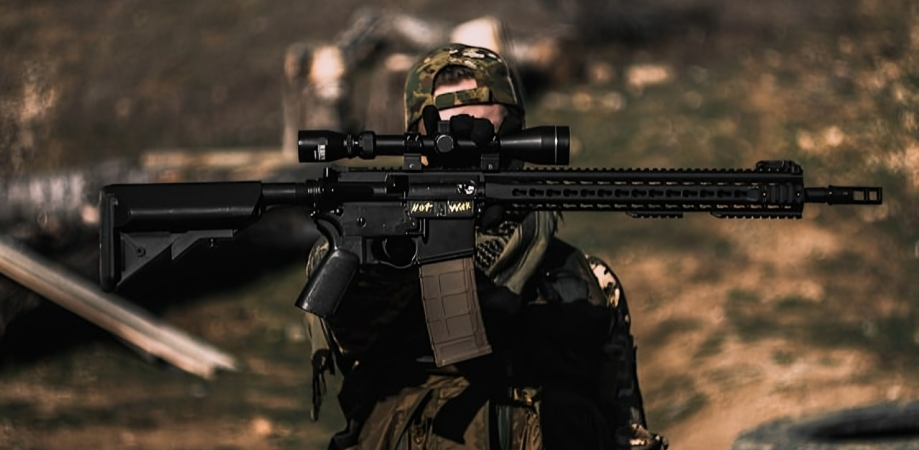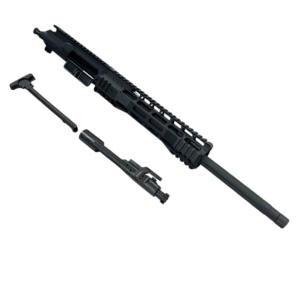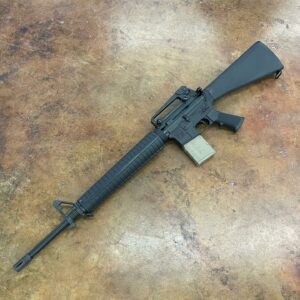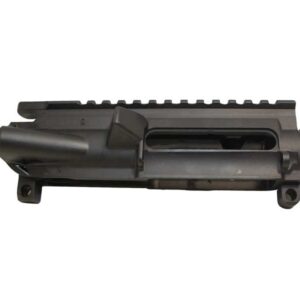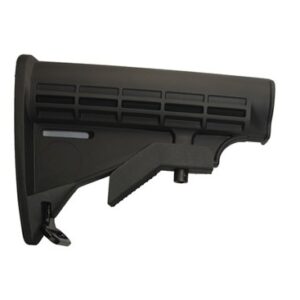When making decisions about AR-15 rifles, the choice between using a .223 Wylde upper vs 5.56 upper presents a regular dilemma to rifle owners. Both uppers, the .223 Wylde upper and the 5.56 upper, provide various absolute benefits as well as multiple drawbacks for precision, accuracy, and hardware functions. This blog post explores the core distinctions between a 223 Wylde upper and a 556 upper, thus assisting you in making the right choice for your AR-15 rifle according to your shooting requirements.
What Is a .223 Wylde Upper?
The .223 Wylde is a hybrid chamber system that combines .223 Remington chamber accuracy with 5.56 NATO receiver pressure capabilities. It functions safely to discharge both .223 Remington and 5.56 NATO ammunition. Users gain both precision and safety benefits through this chamber design, which optimizes accuracy when shooting 5.56 NATO military cartridges. The 223 Wylde complete upper stands out because it combines versatility with high precision levels.
What Is a 5.56 Upper?
Armed forces and civilian users of the AR-15 platform generally choose 5.56 upper receivers as their standard configuration. This upper accepts 5.56 NATO ammunition with the capacity to also use .223 Remington rounds, although they deliver inferior precision when compared to .223 Wylde complete upper receivers. The tolerance levels on 5.56 complete uppers are slightly lower than those of 223 Wylde AR uppers due to their ability to handle higher pressure, which results in decreased accuracy. This top-notch upper serves effectively for intense tactical use but is ideal for the needs of combat-ready operations.
Accuracy Comparison: .223 Wylde vs. 5.56
Among these two upper receivers, the .223 Wylde delivers superior accuracy than the 5.56 model. Precision improves significantly because of the tighter tolerances in the .223 Wylde chamber, thus making it the preferred choice for:
- Long-range shooting
- Precision rifle competitions
- Target shooting
A 5.56 maintains decent accuracy, although it has not been specifically developed for precise shooting applications. This upper functions well at rapid-fire applications since it handles reliability alongside heat management better than achieving sub-MOA precision.
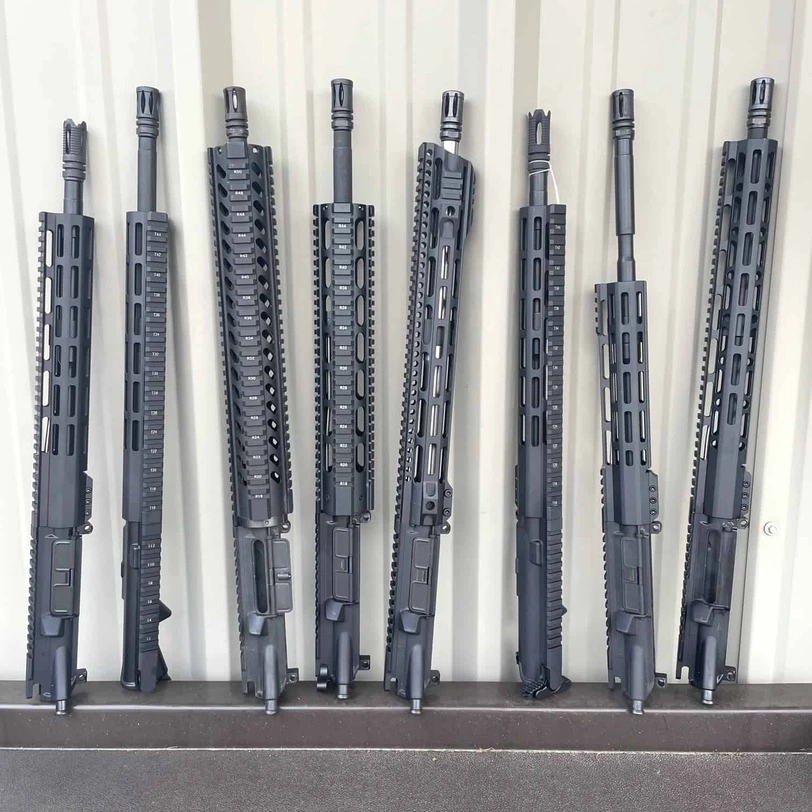
Barrel Pressure and Chamber Design Differences
One of the main differences between the 223 Wylde vs 556 Upper includes the chamber design and their pressure functions.
A complete upper 5.56 receiver presents an optimal choice for military needs and rapid-fire operations because it was designed to withstand higher-pressure 5.56 NATO rounds.
On the other hand, the .223 Wylde complete upper effectively distributes chamber pressure that shields the barrel from excessive wear yet enables the firing of higher-pressure 5.56 NATO cartridges.
Compatibility With .223 Remington and 5.56 NATO Ammunition
A 223 Wylde AR upper provides maximum operational safety because it supports both .223 Remington and 5.56 NATO ammo without compromising its performance capabilities. A 5.56 has the ability to fire both shots, but when using a .223 Remington round in the 5.56 chamber, it might result in degradation of precision because of dimensional differences in the chamber. The 223 Wylde complete upper ensures both types of ammunition function optimally.
Performance and Use Cases
The suitable upper depends entirely on what purpose you need it for. These upper receivers show different characteristics in their respective uses as follows:
Home Defense
The AR-15 556 upper is more common in home defense setups due to its higher pressure tolerance and reliability.
A Wylde upper provides acceptable home defense capabilities, even though it rarely delivers noticeable precision gains when fired at short distances.
Target and Precision Shooting
The .223 upper is a better choice when it comes to precision and accuracy at long-range shooting.
A 5.56 complete upper is sufficient when targeting casual targets, although it provides marginally lower accuracy than competing options.
Competition Shooting
A .223 Wylde is preferred by competitive shooters due to its accuracy.
Competition events still incorporate the AR15 556 upper, although its precise performance falls behind the 223 Wylde variant for competitive purposes.
Hunting
A .223 Wylde complete upper is ideal for hunting small to medium game due to better accuracy.
A 556 upper receiver works well when hunting nevertheless, it lacks precise accuracy at extended distances.
Price and Availability
The Wylde upper is slightly more expensive than a standard 556 complete upper due to its precision-focused chamber design. However, entry-level models of 5.56 ar uppers are available at reduced prices and exist in large quantities on the market.
Both complete upper 223 Wylde vs 556 versions are available with different barrel lengths and finishes, yet manufacturers tend to stock the 5.56 complete uppers mainly.
Which One Should You Choose?
Below you will find a brief evaluation of each option, accompanied by their advantages and disadvantages.
5.56 Complete Upper
Pros:
- Military forces, alongside civilians, use this upper as their operating standard.
- Handles high-pressure 5.56 NATO rounds well.
- It is more affordable and widely available.
Cons:
- It is a bit less accurate than 223 Wylde uppers.
- It is not built for precision shooting.
.223 Wylde Complete Upper
Pros:
- More accurate than 5.56 complete uppers.
- Safely fires both .223 and 5.56 ammo.
- Competitive shooters, along with distance shooters, find this design suitable for their needs.
Cons:
- It is slightly more expensive than the 556 uppers.
- If you fire only 5.56 NATO ammunition, you do not need this specific barrel.
Final Thoughts
Your shooting requirements determine which upper you should use between a 223 Wylde upper vs 556.
If accuracy is what matters to you most, then a Wylde upper emerges as the best option since it achieves the highest levels of accuracy paired with versatility features.
People seeking high value from inexpensive, readily accessible, reliable weapons should consider the 5.56.
The solid performance combined with AR-15 compatibility exists whether you select either a .223 Wylde complete upper or a 5.56 complete upper. Your decision should be based on your specific needs and ammunition choice as well as your budget constraints.

